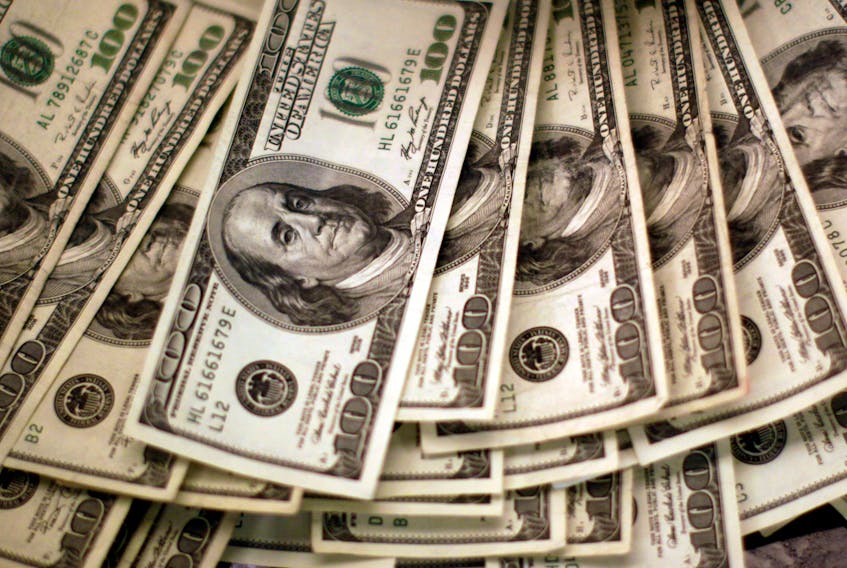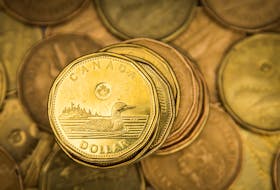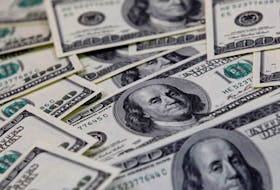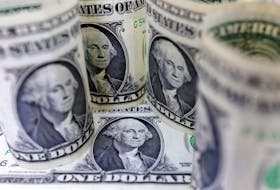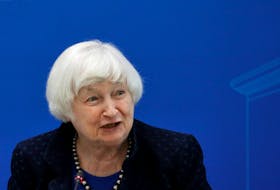By Gertrude Chavez-Dreyfuss
NEW YORK (Reuters) - The dollar fell on Tuesday to its lowest level in more than 2-1/2 years, as investors' appetite for risk increased on prospects of further fiscal stimulus from the United States as well as expectations of a solid global recovery.
News of a proposed COVID bill sank the dollar further, as did the resumption of talks between U.S. Treasury Secretary Steve Mnuchin and House of Representatives Speaker Nancy Pelosi on Tuesday about a stimulus package.
The proposed relief bill of $908 billion would fund measures through March 31, including $228 billion in additional paycheck protection funds for hotels, restaurants and other small businesses.
"Traders are looking for any reason to bid risk up and that comes at the cost of the dollar," said John Doyle, vice president of dealing and trading at Tempus, Inc. in Washington.
"When you get a report that a bipartisan stimulus deal can get done after hopes have been dashed, it's just another reason to bid risk up and sell the dollar," he added.
Pelosi said on Tuesday Mnuchin would review both bipartisan Senate proposal as well her and Senator Charles Schumer's COVID relief plan.
Currencies that thrive in times of risk appetite such as the euro, sterling, as well as the Australian, and New Zealand dollars all rose against the greenback.
The euro and the New Zealand dollar both hit 2-1/2-year highs.
Bitcoin was also on a tear, hitting a record high just under $20,000. The virtual currency though was last down 3.8% at $18,961.
In afternoon trading, the dollar index fell 0.7% to 91.318, hitting 91.263, the lowest since late April 2018.
The euro hit a 2-1/2-year high vs the dollar at $1.2055 and last traded 1% higher at $1.2049.
"The technical argument in favor of additional euro gains in the short- to medium-term is fairly compelling," said Scotiabank in a research note.
"November price action overall was bullish for the euro, the break out from the (second half) consolidation suggests upside potential towards $1.25-$1.26."
Sterling climbed to a three-month peak versus the dollar after Times Radio said Brexit trade deal talks have entered the "tunnel" stage of negotiations. The "tunnel" is a term for an intense final stage of secretive, make-or-break negotiations.
The pound was last up 0.7% at $1.3410.
Nagging worries about rising coronavirus cases have not provided the dollar with much safe-haven support. Speculation is also growing that the Federal Reserve will act to support the economy through a tough winter before vaccinations become available. That should further weigh on the dollar.
The Fed meets to set policy on Dec. 15-16.
Fed Chairman Jerome Powell and Treasury's Mnuchin on Tuesday also urged Congress to provide more help for small businesses amid a surging coronavirus pandemic and concern that relief from a vaccine may not arrive in time to keep them from failing.
The New Zealand dollar hit its highest level since June 2018 and was last up 0.7% at US$0.7055, while the Canadian dollar rose versus the greenback, which dropped 0.4% to C$1.2954. Data showed Canada's economy grew by 40.5% on an annualized basis in the third quarter, rebounding from a historic plunge in the second. (This story refiles to fix typo in the euro price in the 11th paragraph)
(Reporting by Gertrude Chavez-Dreyfuss Editing by David Gregorio, Nick Zieminski and Sandra Maler)

